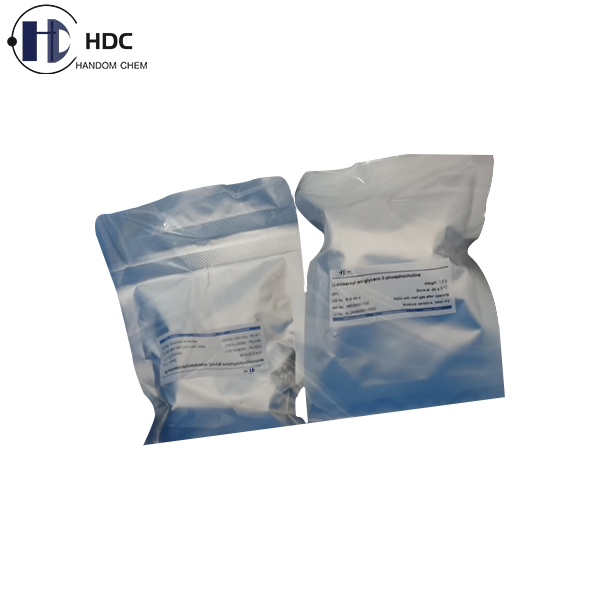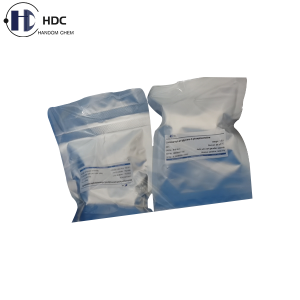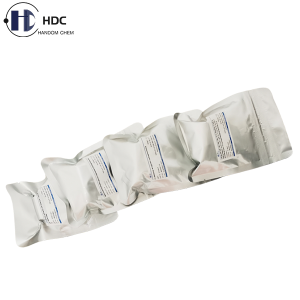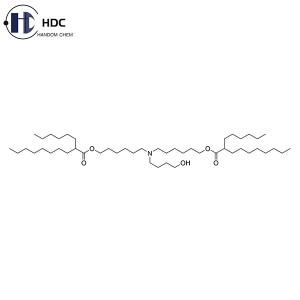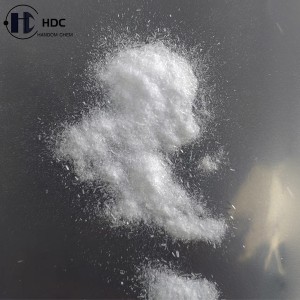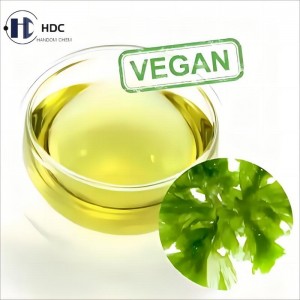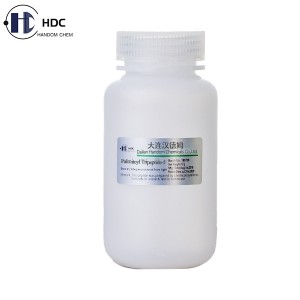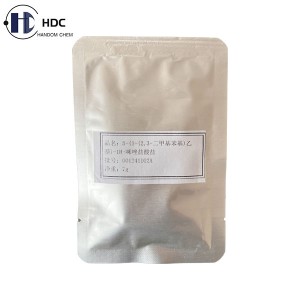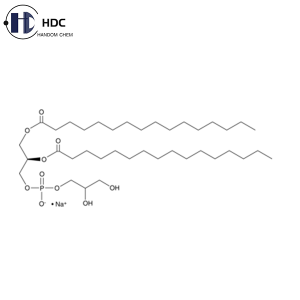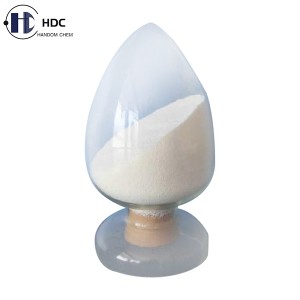((4-hydroxybutyl)azanediyl)bis(hexane-6,1-diyl)bis(2-hexyldecanoate)
Brief Introduction:
Cationic liposome ((4-hydroxybutyl)azanediyl)bis(hexane-6,1-diyl)bis(2-hexyldecanoate), also known as: ALC-0315, is a synthetic cationic lipid (or ionizable lipid). As a PEGylated lipid, it is a colourless oily substance.
At physiological pH, ALC-0315 is protonated at the nitrogen atom to produce ammonium cations, which are attracted to messenger RNA (mRNA) (messenger RNA is anionic). This property enables cationic liposomes to bind to drugs, genes and other bioactive substances to form positively charged complexes, which help these molecules cross the cell membrane and enter the cell.
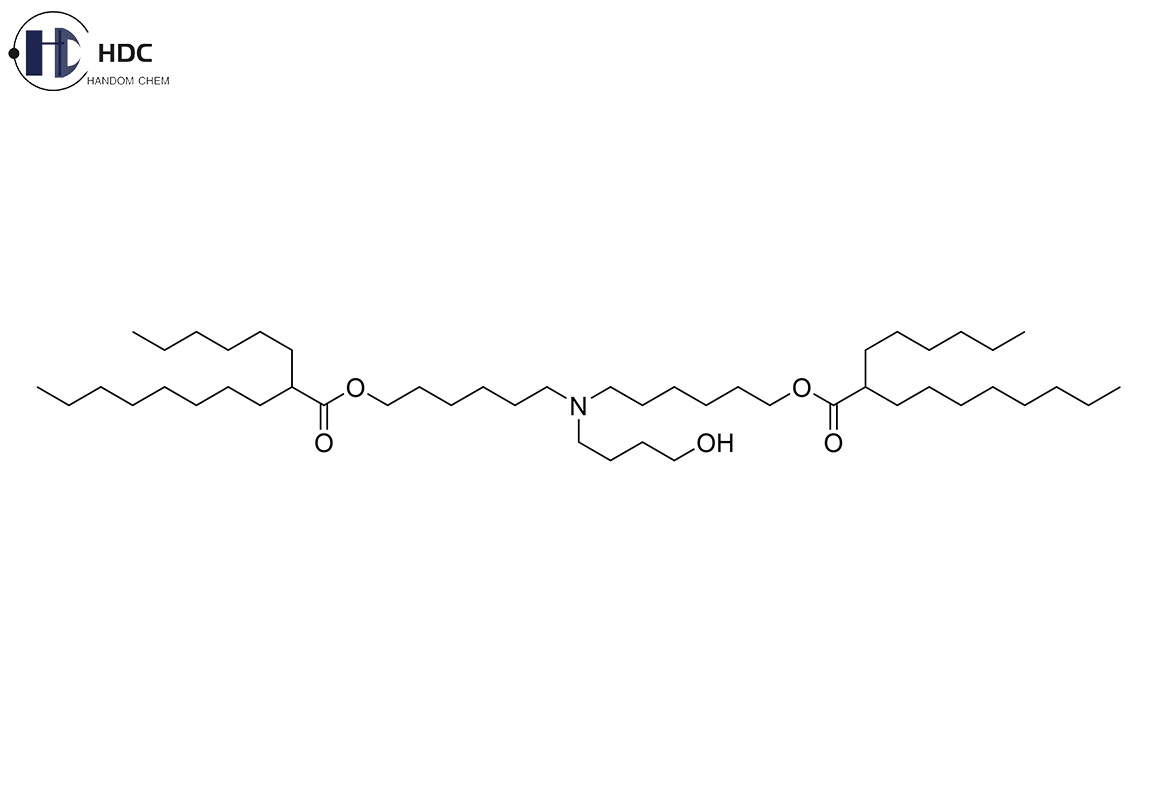
Characteristics of ((4-hydroxybutyl)azanediyl)bis(hexane-6,1-diyl)bis(2-hexyldecanoate):
((4-hydroxybutyl)azanediyl)bis(hexane-6,1-diyl)bis(2-hexyldecanoate) has the ability to self-assemble, making the preparation process relatively simple. At the same time, by forming complexes with negatively charged drugs and binding to cell membranes using electrostatic interactions, these complexes can then enter cells through endocytosis or fusion to achieve effective drug delivery.
((4-hydroxybutyl)azanediyl)bis(hexane-6,1-diyl)bis(2-hexyldecanoate) also has high stability and the ability to protect drugs from enzymatic degradation. Its liposome structure has high stability and can maintain its structural and functional integrity under different environmental conditions. In addition, cationic liposomes can effectively protect negatively charged drugs from enzymatic degradation, thereby improving the bioavailability of drugs.
Specifications of our ALC-0315:
| Test Items | Specifications | Test Methods | |
| Appearance | Colourless to yellowish liquid | Visual | |
| Identity | H-NMR | Complies with the reference substance structure | H-NMR |
| IR | Complies with the reference substance structure | IR | |
| Molecular Weight | Complies | ESI-MS | |
| Assay | 90.0% ~ 110.0% | HPLC-CAD | |
| Purity | Not less than 90.0% | HPLC-CAD | |
| Impurities | DHA Imp-1 | Not more than 1.00% | HPLC |
| DHA Imp-2 | Not more than 1.00% | HPLC | |
| DHA Imp-3 | Not more than 1.00% | HPLC | |
| DHA Imp-5 | Not more than 1.00% | HPLC | |
| DHA Imp-7 | Not more than 1.00% | HPLC | |
| Residual Solvents | Dichloromethane | Not more than 600 ppm | GC |
| n-Hexane | Not more than 290 ppm | GC | |
| Methanol | Not more than 3000 ppm | GC | |
| n-Heptane | Not more than 5000 ppm | GC | |
| Ethyl Acetate | Not more than 5000 ppm | GC | |
| Acetonitrile | Not more than 410 ppm | GC | |
| Moisture | Not more than 1.00% | KF | |
| Endotoxin | Not more than 0.1 EU/mg | ChP<1143> | |
| Microbial Limits | Total Aerobic Microbial Count | Not more than 100 CFU/g | ChP<1105> |
| Total Yeast and Mold Count | Not more than 10 CFU/g | ChP<1105> | |
| Elemental Impurities | Cuprum (Cu) | Not more than 30 ppm | ICP-MS |
| Arsenic (As) | Not more than 1.5 ppm | ICP-MS | |
| Cadmium (Cd) | Not more than 0.2 ppm | ICP-MS | |
| Mercury (Hg) | Not more than 0.3 ppm | ICP-MS | |
| Lead (Pb) | Not more than 0.5 ppm | ICP-MS | |
| Cobalt (Co) | Not more than 0.5 ppm | ICP-MS | |
| Vanadium (V) | Not more than 1.0 ppm | ICP-MS | |
| Nickel (Ni) | Not more than 2.0 ppm | ICP-MS | |
| Lithium (Li) | Not more than 25 ppm | ICP-MS | |
| Antimony (Sb) | Not more than 9 ppm | ICP-MS | |
Applications of ALC-0315:
♔ Gene Delivery:
ALC-0315 is often used in non-viral gene delivery systems, such as liposome-mediated gene delivery. By binding to DNA or RNA, these lipids can help nucleic acids escape the cell's degradation mechanism and effectively deliver them into the cell.
♔ Biomedical Research:
In biomedical research, cationic lipids such as ALC-0315 are also widely used in cell culture, gene expression, and protein function research.
Packaging:
1g/Bottle, 3g/Bottle, 5g/Bottle, 10g/Bottle, 100g/Bag or according to the specific requirements from customers.
Recommended Storage Conditions:
For short-term storage, it is recommended to store at 2℃ ~ 8℃; it is recommended to keep at -25℃ ~ -15℃ under an inert atmosphere for long-term storage.
For reducing the absorption of the moisture, it should be slowly warmed to ambient temperature before opened.
Shelf Life:
36 months if stored under above mentioned conditions.


